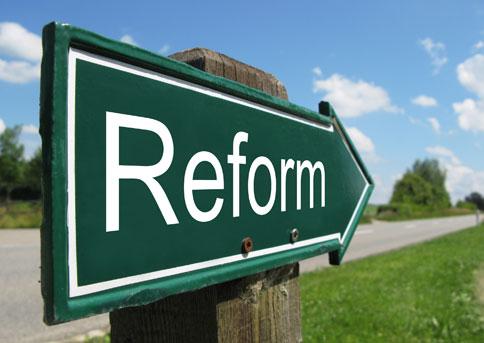Recognizing a tenuous credibility, and reviving a true charity.
Part of The Giving Review’s online symposium, “Conservatism and the Future of Tax-Incentivized Big Philanthropy.”
I am not a conservative or, at least, I am not a conventional conservative. Nonetheless, I often find myself aligned with that part of the ideological spectrum because I do believe in the rule of law and the commitment that every citizen should have to follow the rules as they were intended. Currently, the rules and regulations that govern philanthropy have been twisted and bent so their original intent has been lost. With a few simple changes, this situation could be reversed, and the credibility of the charitable sector could be reaffirmed.
For decades now, the American public has supported the idea that giving money to charities is good and so good that we are willing to provide donors with tax deductions to encourage their generosity. While incentives for giving have been in place for a long time, the current framework was really set in 1969 when, after many hearings and reviews, Congress passed a comprehensive reform package designed to ensure that the recipients of charitable deductions were actually giving their money for legitimate charitable purposes. Prior to 1969, donors to foundations could get a significant tax benefit and not make any serious grants. The new framework required foundations to give away at least five percent of their assets each year and it reduced the tax deduction for the donors to foundations on the grounds that the real charitable impact of the money would be delayed. If you gave your money directly to an operating nonprofit pursuing a real charitable purpose, you received the full benefit. If you decided to create a foundation and give the same amount of money over many years, you received a lower benefit.
In addition, the 1969 Tax Reform Act also sought to prevent all donors, individuals, and foundations from using charitable gifts for the pursuit of political goals. One impetus for Congressional hearings in the 1960s was a concern that nonprofits were engaging in partisan politics through voter-registration and get-out-the-vote (GOTV) activities to benefit particular candidates and that foundations and other wealthy donors were supporting this work as part of their charitable mission. For example, during the Cleveland mayoral campaign in 1967, the Ford Foundation made grants to several nonprofits that focused on voter registration in the black community. When Carl Stokes became the first black mayor of Cleveland, politicians noticed. The new framework adopted in 1969 put serious constraints on what §501(c)(3) organizations can do in relation to elections and, in doing so, made it difficult for donors to make contributions to entities involved in election-adjacent projects.
For some years, these strictures were effective. Foundations made their five-percent distributions each year and, even though grant-related expenses can be counted towards that requirement, most institutions were very careful to keep their expenses low so that Congress had no reason to start a new round of investigations and hearings. Similarly, the constraints on giving to politically motivated projects were effective for the same reason. After watching Ford Foundation leaders and others stumble and stammer before House and Senate Committees, no one wanted to see their institution’s chair or president in the hot seat. Internal Revenue Service scrutiny of nonprofits engaged in voter registration and other election-adjacent activities was also significant enough to discourage major violations of these rules.
Today, the framework set in place in 1969 has been sharply distorted through the strenuous efforts of clever tax advisers and smart lawyers. Many wealthy people forego the creation of foundations and opt to give their money to donor-advised funds (DAFS), for which they can get a full charitable deduction and have no requirement to give any of the money away. Unlike foundations that are required to make public their annual contributions, DAFs are not subject to the same disclosure rules, so a donor can operate literally under the radar and avoid any complications regarding their philanthropic endeavors. DAFs are also used by foundations to fulfill their distribution requirements. A recent Bloomberg report revealed that a number of major hedge-fund managers have created foundations whose money is still managed by them and that these foundations fulfill their five-percent payout requirement by giving all or most of it to DAFs.
Similarly, foundations, individuals, and nonprofits have taken advantage of ambiguities in the restrictions on political activities. The advent of large, well-staffed, and well-lawyered national organizations that sponsor local and statewide voter-registration, voter-education, and GOTV activities has resulted. The 1969 legislation required organizations engaged in this type of work to operate in at least five states. These national groups easily meet that requirement, yet still allow entities with local brands to actually do the work. This may all technically be within the legal boundaries, but their ads, messaging, and actual activities certainly do not come close to accord with the spirit and intent of the 1969 law.
Another way the law has been subverted and twisted is in the growth of highly politicized §501(c)(4) organizations that are allowed to involve themselves more directly in elections and engage in almost every aspect of electoral politics except making direct contributions to a candidate. Because of their wide scope of permissible action in partisan politics, contributions to (c)(4)s are not eligible for charitable tax deductions. However, (c)(3)s are allowed to support these groups as long as the specific projects they fund are aligned with the donor’s charitable mission. As a result, a wealthy political activist can make a charitable contribution to a (c)(3) and that group can then transfer some or all of the money to a (c)(4). Foundations and DAFs can also directly support (c)(4)s as long as they exercise “expenditure responsibility,” a technical term referring to the need for more-detailed financial and programmatic reporting on how the money advances the applicable charitable purpose. One way or another, foundations and the wealthy can get their tax benefits and engage in political activities subsidized by the rest of us.
What should be done to address these two egregious distortions of the 1969 Tax Reform Act? The first challenge, the stockpiling of charitable money in nontransparent funds, is the easiest one to tackle. DAFs should simply be treated the same as foundations, with the same tax benefits and the same distribution and reporting requirements. This can be done by simply getting rid of the much-abused DAF designation and forcing wealthy people to create foundations if they want to leave a charitable legacy.
The political distortions are more complicated. One simple step would be to no longer allow (c)(3)s, foundations, and DAFs to transfer resources to (c)(4)s. The justification for permitting these transfers has always been tenuous at best. The notion that charities need real engagement in electoral politics to pursue their legitimate ends may appeal to limousine liberals and their satraps. However, the intent of the 1969 law was definitely to push the charitable and political realms father apart. The authors of this legislation would be appalled to see how a few loopholes have been used to create a massive overlap between the charitable and the political.
What should be done about 501(c)(3) organizations that involve themselves in election-adjacent activities? There would seem to be two routes. One would be to legally redefine the types of work that can legitimately be done in this area by (c)(3) nonprofits. This might entail broadening the notion of what constitutes partisan activities to include targeting populations that are likely to support a given candidate by focusing registration and messaging campaigns on these groups. Alternatively, at a time of record voter registration and historic turnouts in all communities, it may be time to simply prohibit charities from engaging in registration, voter education, and GOTV projects. When these activities were originally allowed, there was a large discrepancy between the voting behavior of different racial and ethnic groups. That discrepancy has largely disappeared.
A second approach would be to increase enforcement of the current laws. Many commentators have noted that the existing system is broken and one of its biggest weaknesses is a lack of action by federal and state authorities when clear violations of the line dividing charity and politics are reported. Conservatives may not like the idea of an enlarged bureaucracy focused on addressing these abuses. However, given that the bulk of charitable money and charitable work focused on elections benefits liberal and progressive candidates, they should be able to tolerate stronger enforcement simply out of a sense of self-preservation.
The charitable sector is on the verge of losing its credibility. Americans should be very concerned by the current system and its flaws. Giving tax benefits to the very wealthy to create DAFs and then allowing them to sit on the money should worry anyone who wants to see charitable resources deployed rather than warehoused. The blurring of lines between charity and politics strikes at the very core of the 1969 Tax Reform Act and some politicians, like J. D. Vance, seem interested in reopening this issue due to the abuses that are now so flagrant.
One hopes that liberals and conservatives can see the value of a charitable sector in which resources are used appropriately, and tax benefits are accrued for actually supporting legitimate charitable work in our communities. The sector strayed once before, and the result was a greatly expanded set of regulations and prohibitions. If we want to avoid a repeat of the 1960s, it would be wise for all of us, left and right, to exercise some self-control. Unfortunately, self-discipline is not fashionable today—so, alternatively, we should brace ourselves for a round of hearings and reports that reveal how a relatively few organizations have corrupted the current system.







